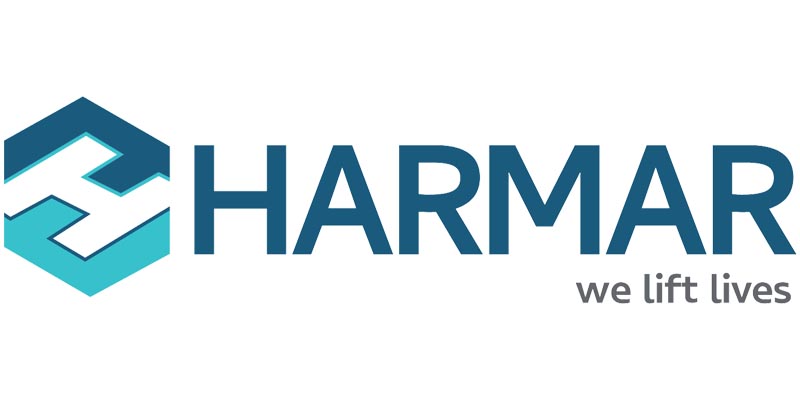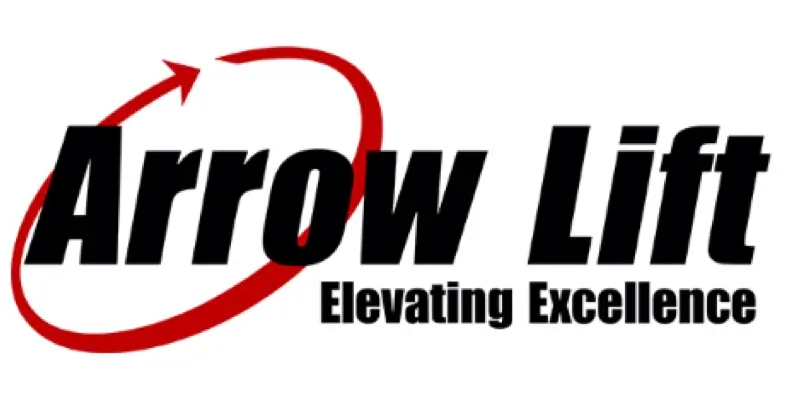Wheelchair Lifts
Updated:
Retirement Living takes an unbiased approach to our reviews. We may earn money when you click a partner link. Learn More
To help you compare wheelchair lifts, we evaluated nine wheelchair lift companies and found the four best choices: Harmar, Arrow Lift, Bruno, and Garaventa. We carefully considered cost, customer service, manufacturing practices, safety features, and expert rankings in our evaluations. These prioritization are based off our conversations with accessibility and aging-in-place specialists.
- Great warranty
- Elevation up to 14’
- Optional battery backup
Offered at dealer locations in all 50 states, the Harmar wheelchair lifts can hold up to 750 pounds and its stainless steel coating resists rust. All lifts come with a three-year warranty on parts, including electrical and motor malfunctions.
- Knowledgeable technicians and representatives
- Test-drive lifts in showrooms
- Professional installation included
Shop stair lifts, luxury home elevators, and quality, custom wheelchair lifts in one of many showrooms across the Midwest and California. Arrow Lift also offers comprehensive service and maintenance plans on all products, including extended warranty options.

- Great products
- Ample safety features
- Excellent customer reviews
Bruno makes high-quality, USA-based wheelchair lifts with limited lifetime warranties. Customize power controls, power source, platform size, and more.
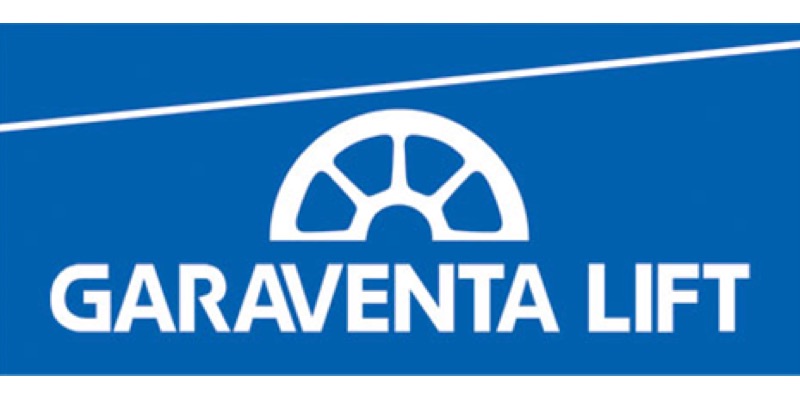
Garaventa Lift
- Great High-Capacity Lifts
- High weight capacity
- Custom fit options
Garaventa Lift manufactures accessibility products including inclined, vertical and portable wheelchair lifts. Choose from seven models of platform wheelchair lifts and three models of portable lifts. Garaventa Lift designs wheelchair lifts to carry up to 750 pounds and raise up to 50 feet. Platform lifts are priced around $4,000 to $6,000.
Compare Wheelchair Lifts
After evaluating nine wheelchair lift companies, we identified the best wheelchair lifts as Harmar, Arrow Lift, Bruno, and Garaventa. We carefully considered cost, customer service, manufacturing practices, safety features, and expert rankings in our evaluations. We also consulted aging-in-place and home modification specialists to determine the most important safety features buyers should consider.
A wheelchair lift is a secure, motorized platform that can raise a wheelchair to and from a vehicle or over stairs. While these lifts are commonly installed on vans, they can also fit residential spaces, such as from the front porch to the sidewalk, driveway, or doorway.
If you use a mobility device, a wheelchair lift will suit your needs better than a stair lift, which only accommodates the rider, not the passenger and wheelchair.
Tips for Choosing a Wheelchair Lift
Your first consideration when buying a lift should be safety. Modern-day platform lifts come with several safety features and modification options to ensure the brand and model meet your needs.
Make a note of the wheelchair lift safety features you want and make these a priority when shopping. However, it’s important to consider your needs now and in the future when prioritizing lift features.
Here are a few questions to ask yourself when shopping for a wheelchair lift:
- What is the weight limit? You’ll need a lift that accommodates the weight and size of you and your mobility device. You might also consider the added weight of a caregiver who may need to ride with you. To be ADA-compliant, all lifts must carry up to 750 pounds, though many models accommodate additional weight.
- Do you need an enclosure for added safety? Similarly, if you have dexterity limitations, do you want power doors that will open by pushing a button?
- How high do you need the lift to rise? The lifts on this guide can reach heights between 10 and 14 feet.
- How will you “call” the lift? Most models have call stations that move the lift from one landing to another, but make note of how many stations it has. For example, you may prefer a call station on each landing with keyed access for added security.
- How is the lift powered? Some models have rechargeable batteries in case the power goes out. Some may require their own electrical circuit. Always consult with an electrician or installer.
- What other modifications do you need to feel comfortable using the lift? For example, you may request obstruction sensors that will stop the lift if it detects an obstacle or alternative controls that are easier to operate.
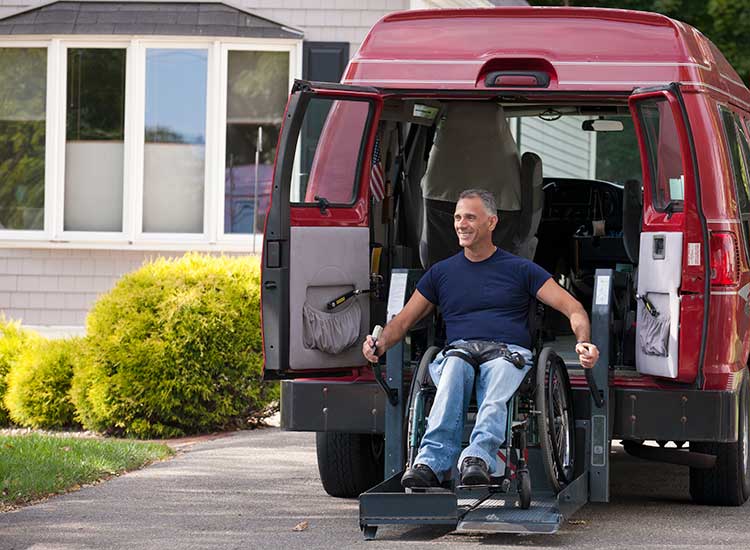
Image Source: Getty
Types of Wheelchair Lifts
The primary types of wheelchair lifts are vertical platform lifts and inclined platform lifts.
Vertical Platform Wheelchair Lifts
Like elevators, vertical platform lifts move between levels of your home using an open-air tower and platform. In most designs, the platform (and rider) is surrounded by a wall barrier for safety.
You might choose a platform lift if you have home entrances on a porch or have a multi-level home; some lifts can travel up to three floors. However, you’ll need ample floor space to accommodate a vertical platform lift — at least 36 inches wide by 48 inches to 60 inches long. Ideally, you’ll want 60 square inches of space to approach turn, and maneuver your wheelchair on the lift.
You’ll also need at least 80 inches of head clearance to accommodate larger power wheelchairs and standing passengers. And hard, level surfaces such as concrete or pavement are often required for safety and use.
Inclined Platform Lifts
Inclined platform lifts are installed to travel over the stairs, following the angle of the stairs. An inclined lift is similar to a stair lift but can carry a wheelchair. For this reason, you’ll need more room to install an inclined lift, which tends to have a lower weight limit between 550 pounds and 660 pounds.
Incline lifts also typically have structural pieces that exist at the bottom of the steps, and need to be considered as fall risk spots for ambulatory users.
Lifts for Vehicles
Many manufacturers that build wheelchair lifts for homes also build lifts for vehicles. While this guide focuses on residential wheelchair lifts, you have several options for transitioning in and out of cars if you use a mobility device. These include under-mount lifts, hoist lifts, and vehicle lifts, which can be installed in a van.
Wheelchair Lift Safety Features
Wheelchair lift safety equipment is vital, whether you buy a wheelchair lift designed to move a person seated in the chair or just the chair itself. Tie-downs keep wheelchair lifts stationary when not in use, and non-slip surfaces and control lock switches are vital safety features. Safety features for wheelchair lifts designed to move an occupied chair are far more extensive. However, models vary and not all safety features may be available with all units.
- Interlocking devices: Prevent the lift from operating unless restraining devices, such as lap belts or wheelchair locks, are properly engaged. This helps ensure the wheelchair user is properly secured before the lift operates.
- Threshold warning: Also called obstacle detection, an alarm will sound if the lift is not properly situated with the bottom threshold before engaging the lift, indicating you need to reposition the lift. It may also automatically stop the lift if an obstacle is detected under the platform before lowering.
- Handrails and safety railings: Prevent the wheelchair from moving or falling off the platform while in motion. Safety rails and straps come in a variety of heights and sturdiness levels.
- Non-skid platform surface: Textured surface helps prevent mobility devices from slipping or rolling while on the lift platform. Ensures stable footing throughout the ride.
- Weight capacity limit: Lifts have a weight capacity clearly posted and will not operate if exceeded.
- Emergency stop button: Allows anyone to immediately stop the lift mid motion for any reason. These stop buttons are critical for lifts with no continuous pressure controls.
- Continuous pressure controls: Require the operator to hold down a control button to keep the lift in motion to ensure the operator retains control of the lift at all times. Pressure controls also allow for quick stops in case of an emergency.
- Backup battery system: Allow lifts to operate in the event of a power failure, so riders do not become stranded on the lift. Some wheelchair lifts have a manual movement backup instead of a battery backup, but these require assistance to operate. In either instance, you may consider investing in a generator if your area has frequent outages.
From The Expert
“It’s important to think about WHO is going to use the safety features on your lift. Are they features that you, the user, can manipulate yourself, or will you need a second person to work them? This may impact your final decision, pending the level of care and frequency of care you have and anticipate.”
Wheelchair Lift Costs
Like many home accessibility products, your cost includes both the equipment price and the installation fee. The cost of a wheelchair lift depends on weight capacity, size of the lift, and the features you choose.
Vertical platform lifts can have a considerably higher price tag because of the self-contained equipment on the lifts. Curved wheelchair lifts require a great deal of careful customization, making these the highest-priced lifts.
A dealer and certified installer can quote a price for installation after an in-home consultation. Factors involved in the cost of installing a vertical wheelchair lift are permits, the vertical rise, size of the platform, weight capacity, amount of leveling and ground preparation, and how much electrical work is needed.
| Lift Type | Average Cost |
|---|---|
| Incline lifts, non-custom | $4,200 – $15,700+ |
| Vertical platform lifts | $8,000 – $25,000+ |
| Curved incline lifts | $10,000+ |
Paying for a Wheelchair Lift
Like other aging-in-place costs, you may have concerns about paying for home modifications to place a wheelchair lift or paying for the lift itself.
Currently, Medicare does not cover wheelchair lifts, but the Creating High-Quality Results and Outcomes Necessary to Improve Chronic Care Act (CHRONIC) gives Medicare Advantage plan providers flexibility for adding non-medical coverage for items such as wheelchair lifts. CHRONIC addresses many other health care issues affecting retirees and expands Medicaid’s Independence at Home program.
If you qualify for Medicaid and a wheelchair lift is deemed medically necessary, you may be eligible to have the cost paid for via Medicaid Home and Community Based Services (HCBS) Waivers, depending on your state laws.
Many states have resources for those needing a wheelchair lift with discount programs or partial grants. Call your state’s Agency on Aging or Department of Disability Services for information about programs available in your area or for a referral to a local office. Veterans may find help paying for a van-adapted wheelchair lift through their regional VA office.
How to Buy a Wheelchair Lift
- Get evaluated: Consult with a mobility specialist or occupational therapist to determine your specific accessibility needs and which type of lift will work best. They can assess factors like your home layout, lift orientation, doorway widths, weight capacity required, and safety features to consider.
- Research options: Look into different lift types like platform lifts, porch lifts, stair lifts, etc. Compare features, dimensions, and weight ratings. Reach out to manufacturers for brochures, spec sheets, and quotes.
- Secure funding: Apply for insurance coverage, loans, grants, or financial assistance if needed. A social worker or case manager may be able to point you toward available resources.
- Hire an installer: Once you’ve selected a lift model, the manufacturer or local dealer can recommend a qualified, licensed contractor to handle the installation. Verify necessary permits are obtained.
- Prepare the space: Make sure the mounting location has adequate structural support and necessary electrical connections. Your installer will also advise on any additional renovations needed to accommodate the lift, such as concrete pads or wall supports.
- Install the lift: The contractor will deliver the lift, assemble it on site, and test the lift to ensure proper functioning. Installation may take several days to complete. The installer and/or manufacturer should provide thorough training on how to use the lift safely and maintain it.
- Arrange inspections: Schedule any required municipal inspections after installation. Ongoing periodic inspections may be recommended to ensure optimal safety.
- Register the lift: Submit any registration documents to the manufacturer to activate warranty coverage. Maintain records of serial numbers and purchase info.
Buying Tip:
If you have an HOA, it’s a good idea to ask them about any limitations mentioned in the bylaws regarding installation locations and/or design, as they may require the lift to be installed on a side entrance or back entrance.
Wheelchair Lift Company Reviews
There are a large number of companies selling wheelchair lifts and quite a few manufacturers. However, the best wheelchair lift companies prioritize costs and customizations.
After our evaluation, we chose the four best wheelchair lift companies: Harmar, Arrow Lift, Garaventa Lifts, and Bruno. Here are our reviews of the products.
Harmar Wheelchair Lift Review
Great warranty
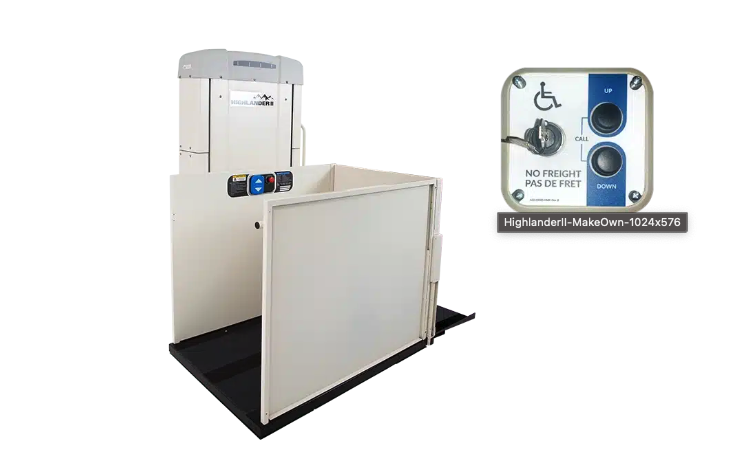
Harmar sells a variety of mobility solutions, including vertical platform lifts, otherwise known as wheelchair lifts, and stair lifts. Wheelchair lifts are a more compact alternative to ramps; Harmar’s HIGHLANDER II lift is 36 inches by 48 inches. It can transport you and your mobility device up to 14 feet, providing access to decks, porches, second-story entries, and more.
Harmar does not publish wheelchair lift pricing online, but pricing for other wheelchair lift brands ranges from $4,000 to $30,000, according to Retirement Living editorial team research. Your final costs depend on lift type, sizing, and travel distance.
Arrow Lift Wheelchair Lifts Review
Knowledgeable technicians and representatives
Arrow Lift is a family-owned accessibility lift company in business since 1985. Its stylish, high-quality wheelchair lifts can be tailored to your needs. Professional technicians and expert representatives will guide you through the selection and installation process, and you can visit showrooms to see its products in person.
Indoor and outdoor vertical lifts from Arrow Lift typically have a weight limit of 750 pounds, including the wheelchair, and they can accommodate level differences of 14 feet. Inclined platform lifts are also available.
To learn more, read our comprehensive Arrow Lift review or get a free custom quote from the company.
Garaventa Lift Review
Great high-capacity lift
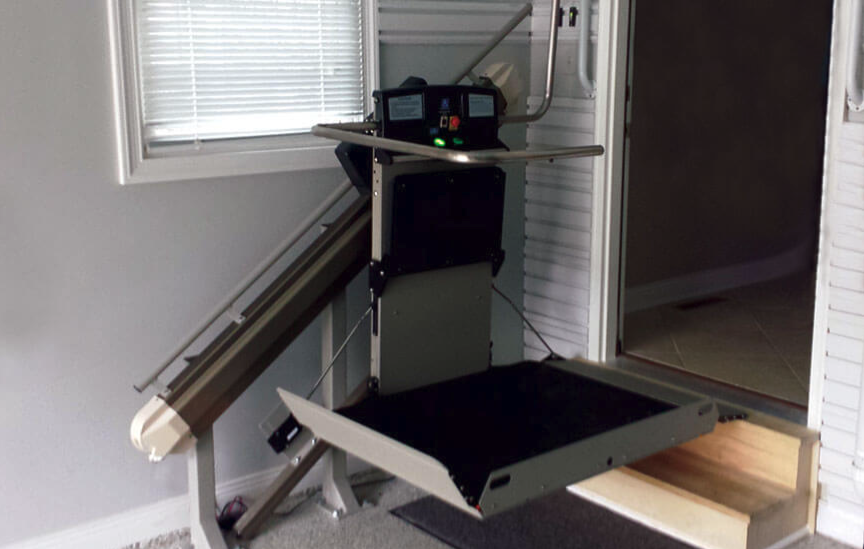
Garaventa Lifts manufactures mobility assistance devices with vertical lifts, inclined lifts, home elevators, evacuation chairs, and portable lifts for both commercial and home use. Every Garaventa wheelchair lift is manufactured to ensure a custom fit. Company-certified technicians complete all installations and provide an equipment demonstration in an instructional session for the customer.
Many Garaventa Lifts can carry a weight capacity of up to 750 pounds, and Garaventa sells lifts capable of reaching up to 50 feet. The portable wheelchair lifts Garaventa manufactures allow convenient access to more areas than ever before. Finally, the Garaventa Evacu-Trac is an emergency wheelchair lift manually operated by a caregiver during electricity outages. Evacu-Trac is the only emergency model produced with a speed governor and brake for safety.
Garaventa Lift is not accredited with the BBB but holds an “A+” rating.
Bruno Review
Great safety features
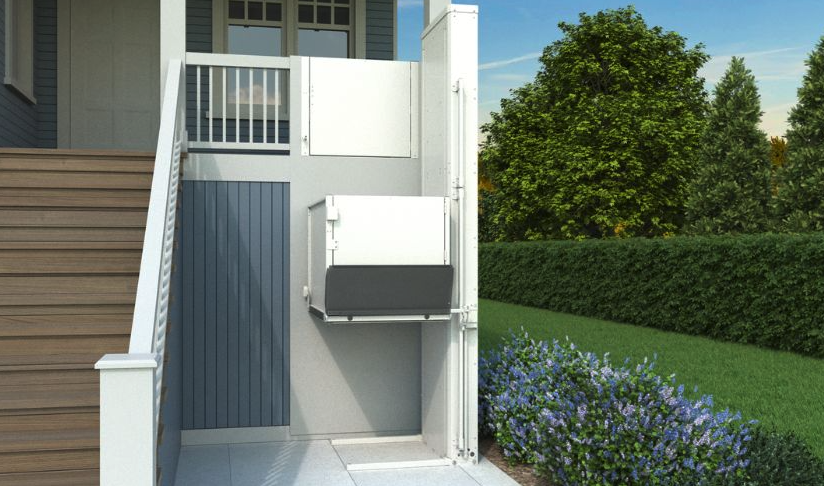
Bruno is a family-owned, ISO 9001-certified independent living aid product designer and manufacturer. With 35 years in the mobility equipment business, the company sells to the public and works with the Department of Veterans Affairs. Bruno produces vertical wheelchair lifts, indoor and outdoor stair lifts, and a wide range of automotive wheelchair and scooter lifts, all manufactured and packaged in the U.S. and sold around the world.
Bruno’s extensive automotive wheelchair lift line includes platforms, interior lifts, hoists, and quick-connect lifts for trailers pulled behind sedans. The company makes and sells a vertical wheelchair lift for indoor or outdoor use that runs up to 14 feet, especially useful for basements and decks.
Bruno Independent Living Aids is accredited with the BBB and holds an “A+” rating.
Our Search for the Best Wheelchair Lifts
- We searched for an extensive list of nine wheelchair lift companies.
- We evaluated wheelchair lift companies based on our expert-guided buying criteria: manufacturing, cost, customer service, safety features, customer reviews, and customization abililities.
- We provided you with the best wheelchair lift companies for consideration.
Wheelchair Lift FAQs
Can I install a wheelchair lift myself?
Wheelchair lifts are rarely suitable for DIY projects because they require specialized tools and structural modifications. In addition, some manufacturers only warranty wheelchair lifts installed by a professional — this includes refurbished lifts. Your dealer can recommend local contractors to help you.
Is a stair lift the same thing as an inclined wheelchair lift?
No, a stair lift is a motorized chair that moves along a staircase, requiring the user to stand and walk to vacate the seat. An inclined wheelchair lift platform holds the chair and occupant while navigating stairs.
How does a home elevator differ from a vertical wheelchair lift?
A home elevator is typically fully enclosed with a smaller footprint compared to a wheelchair lift and may not safely accommodate all wheelchair sizes.
How long does it take to install a wheelchair lift?
The time required for wheelchair lift installation varies depending on prep work such as needing to pour a cement base. Most wheelchair lifts are installed in a few days with minimal disruption to your home and routine.
Concluding Thoughts on Wheelchair Lifts
Overall, a wheelchair lift can be a vital part of maintaining self-sufficiency. The first step in considering a wheelchair lift is to take a realistic look at your needs vs. the options available. If you only use a wheelchair for mobility and want an automotive lift, you may need to buy a vehicle to be fitted with the lift or opt for a wheelchair van. The tilt of an incline lift may feel more secure but isn’t the best choice if the stairs are particularly narrow and others frequently need access to the steps. Whatever your needs, there are plenty of options in a variety of price ranges to choose from to help you meet your mobility goals.
Best Wheelchair Lifts
| Wheelchair Lifts | Best For | |
|---|---|---|
| 1 | Harmar | Great warranty |
| 2 | Bruno | Great safety features |
| 3 | Garaventa Lift | Great high-capacity lifts |
